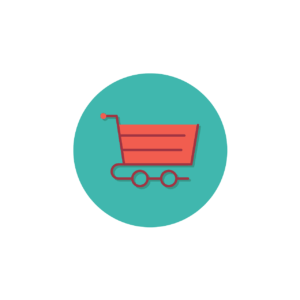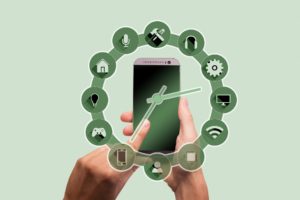"Today's consumers are more enlightened and empowered than ever. And they are placing ever-greater demands on their retailers to either "get it right" or lose their business."
- Kali Klena, IBM Global Retail Lead
Today's savvy consumers contrast sharply from yesterday's shoppers. They are confident, industrious, and technologically astute, and expect businesses to exhibit the same qualities. Failure to keep up with latest trends in consumer behavior can hinder your company's ability to thrive and maintain a competitive edge in your industry. Below is a look at the top trends in consumer behavior in the 2010s.
1) They are constantly connected
"Whether it's turning on your tablet first thing in the morning to scroll through your favorite sites as you eat breakfast, checking your email to review the latest offers, or looking for location-based information on your smartphone while running errands, your daily habits are likely those of an 'always connected' consumer."
- Catrina Conn, ClickZ
Since 2010, the percentage of consumers using mobile devices to access the internet rose from 23 percent in 2010 to 84 percent in 2018. Smartphone e-mail rose to 79 percent and 67 percent of consumers now stream music on their phones. With consumers now spending an average of five hours per day on their mobile devices, business owners are recognizing the importance of having mobile-friendly websites and user-friendly apps.
2) They are impatient
"People are making decisions faster than ever before, and they expect to be able to act on those decisions instantly. People want help in these decision-making moments. For marketers, this means shifting their strategies to keep pace with these impatient consumers."
- Think with Google
Today's consumers are more demanding than ever when it comes to their needs being met quickly. They expect immediate responses to product inquiries and over half of consumers will abandon your website if it takes longer than three seconds for pages to load. Impatience among consumers has prompted business owners to optimize their websites, increase their accessibility, and deliver superb supply chain efficiency in an effort to attract and keep customers.
3) They use a variety of devices during the customer journey
"Digital-savvy consumers now use a variety of devices to connect to the internet in order to interact with digital content, services, experiences and brands. Consumers leverage this connectivity for the purposes of entertainment, education, knowledge, social sharing and commerce - one of the biggest beneficiaries of these shifts."
- Michelle Evans, Global Head of Digital Consumer Research at Euromonitor International
Before smartphones and tablets gained popularity, consumers primarily used a personal computer to progress through the phases of the customer journey. Within the past several years, multiple devices are now used to complete 41% to 65% of all online purchases.
Researchers have found cross-device journeys to be associated with higher rates of browsing and product views, lending value to the use of multiple devices. Business owners have responded to this trend by revamping their websites to make them more mobile-friendly and by increasing the level of personalization offered across devices.
4) They take control of their purchases
"It all started with customers taking control of their purchase experience. They devised new ways to evaluate products, developed new shopping habits, eliminated traditional sources of information including the salesperson, and moved managing their personal lives (and work) to multiple mobile devices."
- Christine Crandell, President of New Business Strategies

Consumers are more industrious and confident than ever before. They are eliminating wholesale distributors by buying directly from manufacturers and e-commerce companies. Business.com explores this trend in the article, "Is Wholesale Over? The Death of the Middleman". By becoming managers of their own orders, shoppers are becoming experts in the following aspects of supply chain activity,
- Selecting their preferred mode of shipping
- Tracking the status of their orders
- Handling their own returns
5) Their expectations are higher than ever
"As disruptive companies leverage breakthroughs in cloud, mobile, social, and artificial intelligence technology to deliver personalized, valuable, and immediate experiences, customers have more choices than ever. As a result, they grow to expect this superior experience from any business they engage with."
- Nick Johnson, Salesforce
From unlimited accessibility to expedited shipping to jaw-dropping warranties, consumers expectations are at an all-time high. Failure to cater to the needs of current consumers can lead them to quickly abandon your company and explore other providers who are willing to meet their expectations. Here are a few specific ways that consumer demands have evolved in the 2010s:
- Hours of operation: 43% of consumers expect 24/7 service from online retailers and e-commerce companies
- Shipping: A growing number of customers expect premium delivery services or free shipping
- Warranties: Today's consumers expect longer, more comprehensive warranties on products
6) They are more apt to buy directly from manufacturers
In 2017, Business.com explored this trend in their article, "Is Wholesale Over? The Death of the Middleman". Ten years ago, wholesalers and distributors played a key role in supply chain operations. Today, however, the rise of e-commerce and consumers' growing preference to buy directly from manufacturers have contributed to the elimination of many wholesalers and distributors.
Today, a whopping 88% of consumers choose to buy directly from their preferred brand if given the option. This represents a stark change from the 1990s and early 2000s, during which distributors and wholesalers controlled product dissemination. Some of the key factors contributing to this trend include the following:
- Cost savings: Savvy consumers are no longer willing to pay the "middleman markup"
- Faster delivery: Orders often arrive faster when they do not have to pass through as many channels
- Manufacturer contact: Consumers like the opportunity to work directly with manufacturers
7) Live chat is now their preferred mode of communication
"A chat box sits calmly in the corner of the screen (usually the lower right corner) until the user decides to bring it up. And when someone types in a question, that question usually gets answered in a flash. That's why most people (about 79%) use live chat."
- Neil Patel, co-founder of Crazy Egg, Hello Bar, and KISSmetrics
Prior to the introduction of live chat, consumers basically had only two ways to communicate with a business. They could make a telephone call and contend with automated prompts and voicemail or they could send an email and wait hours or days for a response.
Since live chat began to gain traction in the early 2010s, today's busy consumers now have a means of receiving an immediate response to their inquiries. Live chat has steadily become consumers' preferred mode of communicating with businesses and is producing the highest rates of satisfaction among consumers. Here are a few reasons why today's consumers prefer to use live chat instead of telephone or email:
- Live chat is an easy, cost-effective way for international consumers to communicate with businesses across time zones
- With live chat, consumers can often communicate with businesses outside of standard business hours
- Live chat eliminates frustrating telephone hold times and delays awaiting return phone calls
In great part because of its popularity among busy consumers, the demand for live chat rose by over 8 percent in 2017 and is expected to continue to grow well past 2020.
8) Consumers are interacting with chatbots every day
"According to the survey conducted by Oracle, 80% of B2B businesses are looking forward to adopting chatbots by 2020. Decision makers and business leaders believe that using automation technologies in specific areas of their business, like customer services, marketing and sales, will improve customer experience while cutting labour costs."
- Chatbots Life
Prior to the mid-1960s, the term "chatbot" did not exist. The first chatbot was developed in 1966 and was named Eliza. Over the next three decades, more chatbots were developed and they gradually began to gain traction as businesses discovered their utility. However, the use of chatbots did not gain significant momentum until the 2010s. Today's chatbots are subtle, sophisticated, and designed to delight your consumers with their speed, efficiency, and intuitive design. Below are just a few benefits that consumers are receiving through their interaction with chatbots:
- Advanced language processing technology to produce a natural conversational flow
- Multiple interfaces to satisfy consumers' desire for convenience
- Personalized for businesses in all industries
- 24/7 service to enable businesses to respond immediately to consumer requests from all time zones
- Unparalleled promptness with the resolution of problems and questions
The Bottom Line
We invite you to contact us to learn how we can help you respond to the changing consumer behavior and the demands of today. With our revolutionary instant messaging technology, we can help enhance your customers' chat experience and ensure that the chat experience you provide meets the needs and desires of demanding consumers. We leave no stone unturned in our efforts to help you optimize your sales.
In addition to delighting your customers, we will help you increase your efficiency while controlling your costs. Our modular approach to enterprise chatbots is second to none and we invite you to learn how we have enabled companies in every industry to respond to today's unique challenges. We look forward to helping you offer award-winning service to your customers!







